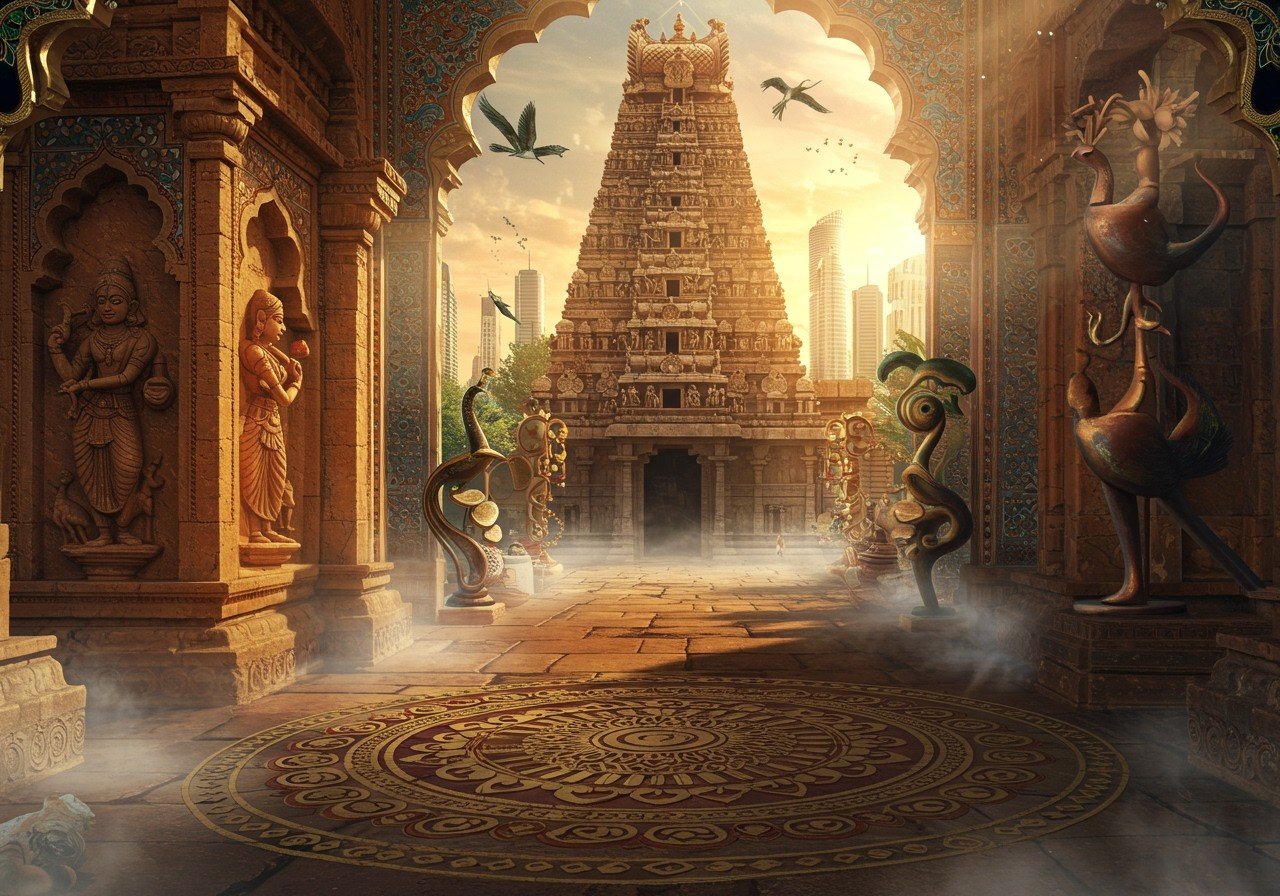
India’s art and architecture stand as a testament to its rich cultural heritage and history. This blog post explores the diverse styles and influences that have shaped Indian art and architecture over centuries, from ancient temples and forts to modern structures. Indian architecture reflects a fusion of various traditions, religions, and regional styles. We’ll delve into the intricate details, historical contexts, and cultural significance behind these artistic and architectural marvels.
Historical Evolution of Indian Architecture
Indian architecture has evolved significantly over the centuries. Starting with the Indus Valley Civilization (c. 3300-1300 BCE), known for its advanced urban planning, we see early signs of architectural sophistication. The arrival of Islam introduced symmetry, geometric designs, and calligraphy, exemplified by the Taj Mahal. The British period saw the emergence of Indo-Saracenic architecture, blending Indian, Islamic, and European styles. Each period’s architecture has distinct features and historical significance.
- Maurya and Gupta Periods (c. 322 BCE – 550 CE): These eras saw the development of Buddhist stupa architecture, with iconic structures like the Sanchi Stupa, showcasing intricate carvings and symbolic representations.
- Medieval Period (c. 6th – 16th century CE): Dravidian and Nagara styles of temple architecture flourished. Dravidian temples in the South featured towering gopurams, while Nagara temples in the North had distinctive shikharas. This period also witnessed the emergence of regional styles influenced by local rulers and traditions.
- Islamic Influence (c. 12th – 18th century CE): The Delhi Sultanate and Mughal Empire introduced Islamic architectural elements such as domes, minarets, and arches, resulting in magnificent structures like the Jama Masjid and the Taj Mahal.
- Colonial Era (c. 17th – 20th century CE): British rule brought European styles, leading to a mix of Victorian, Gothic, and Neoclassical structures, exemplified by buildings like the Victoria Memorial and Chhatrapati Shivaji Maharaj Terminus.
- Post-Independence (1947 – present): Modernism took hold, with new designs and materials shaping contemporary architecture. Architects like Le Corbusier contributed to the development of planned cities like Chandigarh, showcasing innovative urban planning and architectural design.
Regional Architectural Styles
India’s diverse regions each have unique architectural styles. These styles reflect the local climate, materials, and cultural influences, creating a rich tapestry of architectural expressions across the country.
- Dravidian Architecture: Common in South India, featuring tall gopurams, intricate carvings, and vast temple complexes. Examples include the Meenakshi Amman Temple and the Brihadeeswarar Temple.
- Nagara Style: Found in North India, characterized by beehive-shaped shikharas, curvilinear forms, and elaborate ornamentation. Examples include the Kandariya Mahadeva Temple and the Jagannath Temple.
- Rajasthani Architecture: Known for havelis and forts with jharokhas (overhanging enclosed balconies), intricate latticework, and vibrant colors. Examples include the Hawa Mahal and the Amber Fort.
- Kerala Vernacular Architecture: Eco-friendly design with sloping roofs, open courtyards, and the use of natural materials like wood and laterite. This style emphasizes harmony with the surrounding environment.
- Himalayan Influence: Seen in temple and monastery architecture, reflecting local materials like wood and stone, and adapting to the mountainous terrain. Examples include monasteries in Ladakh and Sikkim.
- Goan Coastal Architecture: A blend of Portuguese and Indian elements, especially in churches and homes. This style features bright colors, tiled roofs, and ornate balconies, reflecting the region’s colonial past.
Religious Influences on Indian Art and Architecture
Religion has deeply influenced Indian art and architecture. Religious beliefs and practices have shaped the design and construction of sacred spaces, resulting in unique architectural styles and artistic expressions.
- Hindu Temples: Symbolic designs with elaborate carvings depicting deities, mandapas (pillared halls), and towering gopurams or shikharas. These temples often serve as centers of community life and religious rituals.
- Buddhist Architecture: Stupas, viharas (monasteries), and chaityas (prayer halls) emphasize simplicity, tranquility, and symbolic representations of the Buddha’s teachings.
- Jain Temples: Intricate carvings, detailed ornamentation, and the use of marble and sandstone reflect Jain spiritual beliefs and values. These temples often feature elaborate domes and shikharas.
- Islamic Architecture: Domes, minarets, arches, and calligraphy adorn mosques and palaces, showcasing the grandeur and artistic sensibilities of Islamic traditions.
- Christian Influence: Colonial-era churches showcase European architectural styles like Gothic, Baroque, and Neoclassical, reflecting the spread of Christianity during the colonial period.
- Sikh Architecture: Gurdwaras (Sikh temples) feature unique architectural elements like domes, minarets, and chhatris (decorative pavilions), symbolizing community spirit and Sikh values.
Poojn.in: Your Source for Authentic Indian Cultural Goods
Poojn.in is India’s leading online store for cultural goods and services. We offer a wide selection of products related to Indian art, architecture, and religious practices. Explore our collection to discover authentic murtis, puja items, and decorative pieces that reflect India’s rich cultural heritage.
Explore our extensive collection of products related to Indian art, architecture, and religious practices at www.poojn.in.
Discover more about Dravidian architecture and Hindu temple architecture on our blog:
- Dravidian and Nagara Architecture: A Comparison of Styles
- Dravidian Temples: A Guide to Their Key Architectural Features
- Hindu Temple Architecture: A Journey Through Sacred Spaces


